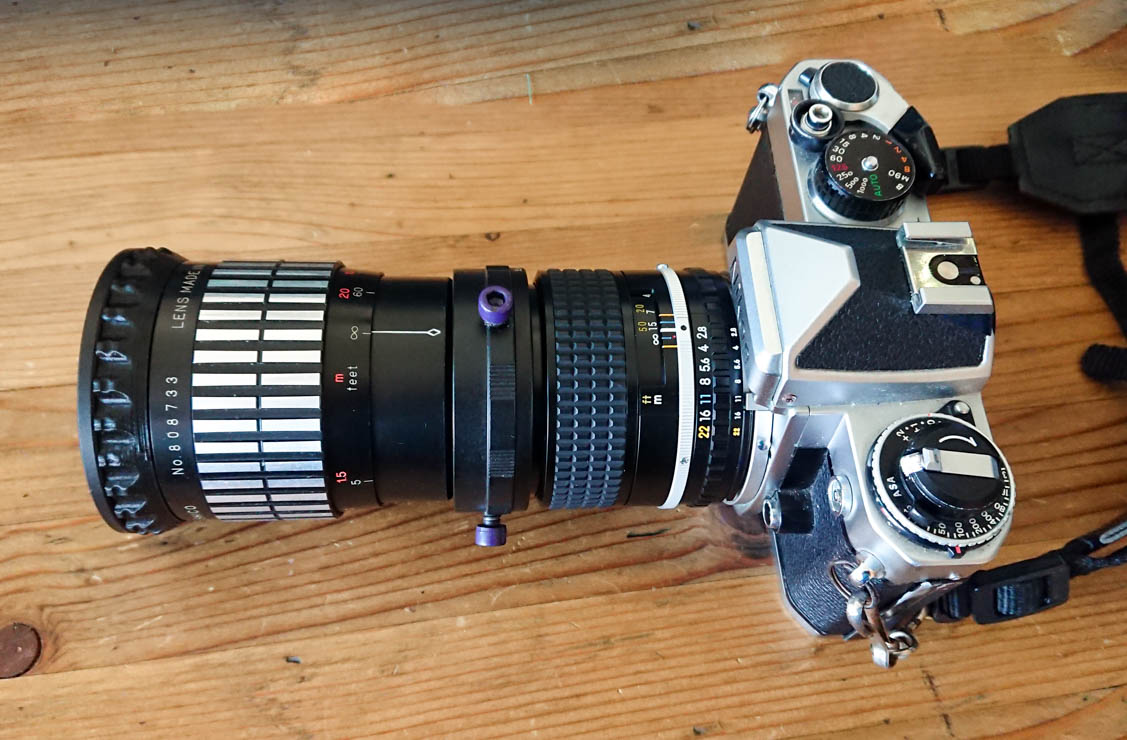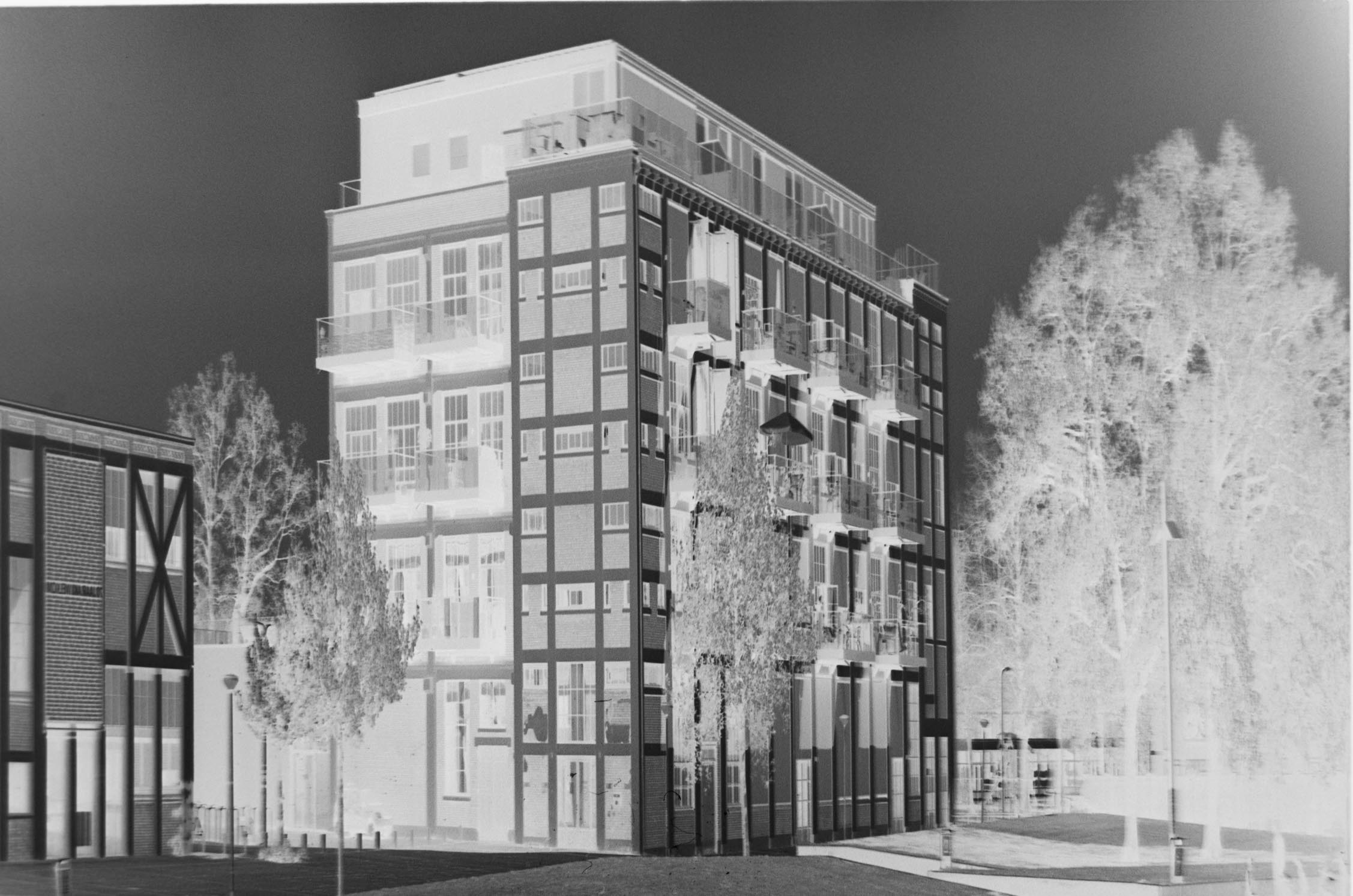Anamorphic Photography
 This was my setup for these pictures- the excellent Nikon FE with a 100mm lens, and the Proskar anamorphic-16 adapter, originally built for 16mm projectors. While a bit long, it's still fairly portable and not too heavy.
This was my setup for these pictures- the excellent Nikon FE with a 100mm lens, and the Proskar anamorphic-16 adapter, originally built for 16mm projectors. While a bit long, it's still fairly portable and not too heavy.

In this photo, you can see a few things- the center sharpness is quite good, while edge sharpness gets progressively worse. (this gets better if stopped down) Also, that this format is indeed W I D E. None of the images in this post are cropped at all- they’re showing the full originally 3:2 negative, which has now been expanded to a crazy 6:2 (3:1) photo.

In close-ups, the distinct look that anamorphics bring becomes more noticeable. Combine this with the soft bokeh of the 100mm lens, and the overall effect is quite nice.
I’ve also darkroom-printed this photo (which requires a crazy darkroom setup) for that post, see Anamorphic Darkroom Printing


This was a long-exposure shot at a crossing, of 12 seconds. I didn’t think to bring a tripod, so I had to hold it tight against a lanternpost. Seems like that worked. The stars are from the relatively closed aperture. Also really neat: You can see that some of the vehicles used PWM controlled LED lights- if you look at the green and yellow streaks, you’ll notice they’re made up of a lot of little dots!

B/W pictures shot on Agfa apx100, developed in Ilfosol3 Color pictures are on Fujifilm C200, shot at 400iso, pushed 1 stop in dev.